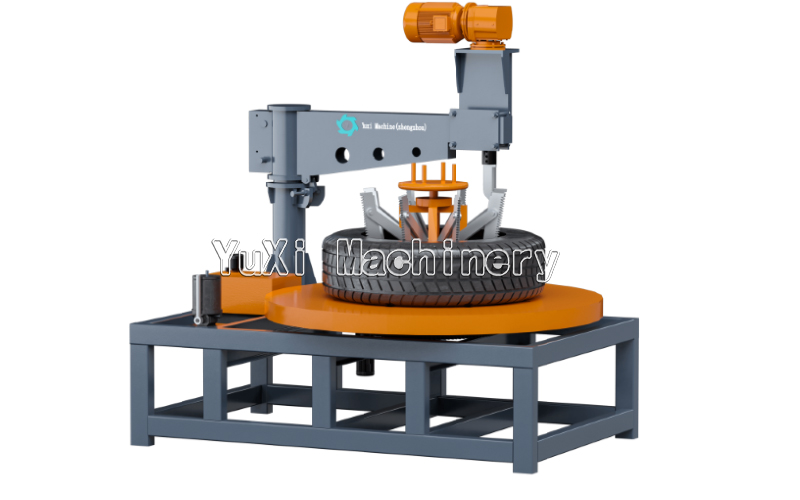Against the backdrop of approximately 1.5 billion scrap tires generated globally each year, the challenge of efficiently and environmentally recycling these “black pollutants” has become a critical issue in the circular economy. Scrap tire bead cutters, as a key link in this industrial chain, are providing a viable solution with their unique technological advantages.
Mechanical Structure and Materials
The mechanical design of bead cutters reflects modern engineering precision. The core cutting mechanism is typically made from high-strength steel, ensuring stability during high-speed rotation and high-pressure cutting. The cutting tool head uses high-hardness alloys, such as tungsten carbide-based composites, which are not only hard and wear-resistant but also maintain good cutting performance at high temperatures, effectively extending tool life.
The overall frame is constructed from heavy-duty steel, optimized through Finite Element Analysis (FEA) to ensure stability under prolonged, high-load operation. The design of the cutting arm fully considers dynamic balance to reduce vibration and further improve cutting precision.

Modern bead cutters are often equipped with PLC (Programmable Logic Controller) or more advanced industrial computer control systems. These systems enable:
Cutting Process Innovation
Traditional bead cutting relies heavily on manual or semi-automatic equipment, resulting in low efficiency and inconsistent cutting precision. Modern bead cutters employ constant-speed circumferential cutting technology, often combined with multi-tool synchronous operation (in some high-end models). This not only significantly improves production efficiency but also ensures the integrity of bead and carcass separation, creating favorable conditions for subsequent rubber and steel wire sorting.
Some advanced models also incorporate adaptive cutting technology, which can dynamically adjust the cutting path based on the actual wear and deformation of the bead, further improving cutting success rates and material recovery rates.
Value to the Recycling Chain
The application of bead cutters has had a profound impact on the entire scrap tire recycling industry chain:
Economic Analysis
Taking a recycling line with a daily capacity of 500 tires as an example, the introduction of a bead cutter leads to:

Market Demand Drivers
With increasingly stringent environmental regulations and growing awareness of resource utilization, global demand for efficient scrap tire processing equipment continues to rise. There is significant market potential for bead cutters, particularly in regions with high environmental standards such as Europe and North America, as well as in emerging economies like China and India.
Market research institutions predict that the global scrap tire recycling equipment market will grow at an annual rate of approximately 8%–10%, with bead cutters, as key preprocessing equipment, occupying a significant share.
In the future, scrap tire bead cutters will develop in the following directions:
A scrap tire recycling center in Germany’s Ruhr industrial area once faced challenges of low processing efficiency and frequent equipment failures. After introducing an intelligent bead cutter from a certain brand, their operations underwent significant changes:
The center’s manager stated: “The bead cutter is not only the heart of our production line but also a crucial step in achieving our goals of green and sustainable development.”
The emergence of the scrap tire bead cutter represents not just a technological advancement but also the implementation of our philosophy on resource circularity. It transforms what was once a troublesome “black pollutant” into recyclable “black gold.”
With continuous technological innovation and sustained market momentum, we have reason to believe that scrap tire bead cutters will play an increasingly important role in the global circular economy. They not only help enterprises achieve economic benefits but also drive society toward a more environmentally friendly and sustainable direction.
On this path of turning waste into treasure, every technological breakthrough is an investment in the future of our planet. Let us join hands, with innovation as our blade and responsibility as our wheel, to jointly drive a green future.